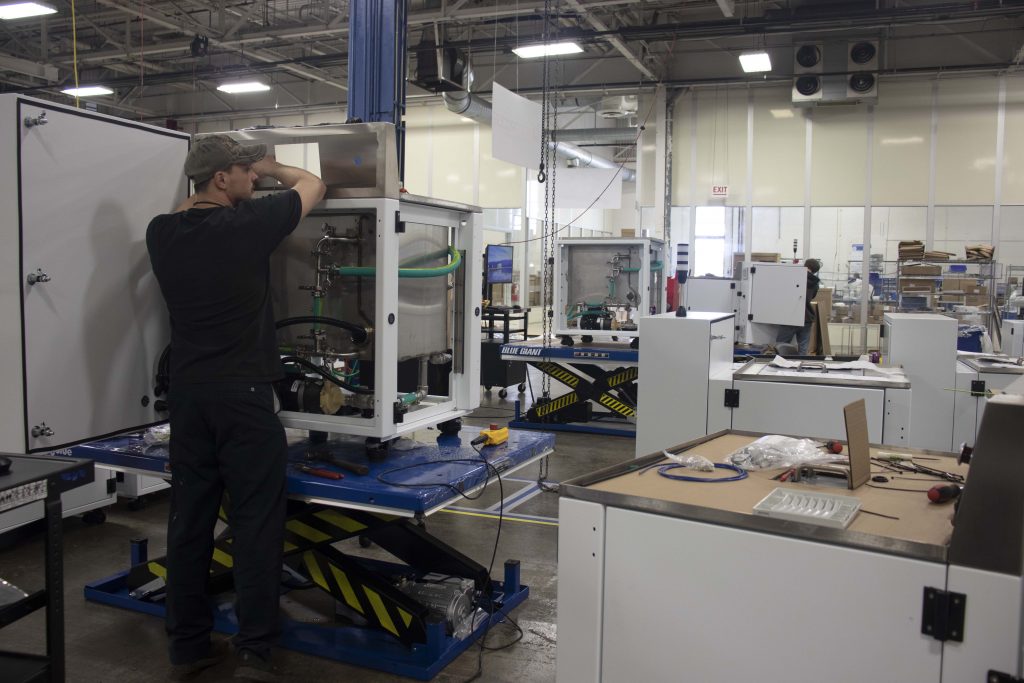Whether you’re a Fortune 500 corporation or you just walked out of the chamber of commerce with your first DBA, everyone knows that product companies will have to market the new product introduction journey when bringing your product to market. Sure, here at PEKO we manufactured machinery and equipment for a living, but these lessons can apply across all NPI industries. Based on our decades of experience, here’s our top 10 list of do’s and don’ts to help lay a successful foundation for your NPI journey.
Do: Build a Strong Team
Bringing a product to market is a complex journey with various challenges along the way. In the realm of New Product Introduction, it is crucial to acknowledge both your strengths and weaknesses. Building a team of diverse talents that complements your skill set, including designers, industry experts, lawyers, engineers, financial experts, and more, can provide invaluable support along the way. These individuals can offer guidance, address uncertainties, and most importantly, help prevent critical errors from occurring during the process. By recognizing the importance of teamwork and leveraging the expertise of those around you, you can enhance your chances of a successful product launch.

Don’t: Do it Alone
With tight budgets, deadlines and a firm grasp of your intellectual property, it’s tempting to take the entire project on yourself. However, sometimes people find themselves as the CEO, engineering department, marketing department, New Product Introduction manager, and others when they find themselves tasked with brining a new technology to the market. Instead of wearing way too many hats, try gathering confidants to help you take on such monumental tasks.
Do: Have a Vision
You’ll never get to where you’re going without a compass. Having an established vision of your goal is worth its weight in gold. New Product Introduction teams should write a goal, draw a sketch, make a note and plaster it on the wall so you can focus exactly on what it is that you’re trying to achieve. With all the distractions that will come your way during new product development efforts, you’re going to need a clear vision of what you’re trying to achieve. This is classic, maybe even a bit cliché, however, having a goal in mind works so make sure you keep your eye on the prize.
Don’t: Leave it Up to Others
As I always tell me team: “No one cares as much about your ‘thing’ as you do.” Your new product is your baby; your creation; and, in a lot of cases, your mission in life. Times will come when you get input from others, including criticism and recommendations. While it is wise to take some of that input from others into consideration, at the end of the day, this is your product. You make the decisions; you have the final say. Do your research, know your market, and execute in your image.
Do: Double Your Budget
Two Words: Sticker Shock. Yes, you want ROI, and your investors need ROI. However, someone is going to ask you to prove your business’s cases and there is going to be costs associated with it. Decisions are made based on budgets and you really can’t blow it all. You wouldn’t believe how many times we’ve seen a great new product die here at PEKO all because funding ran out. Be very conservative in your budgeting for the new product introduction journey. Time will go slower than you think, and your burn rate will be higher than you expected. Look at your budget over, and over again, and realize that you will probably overrun that budget significantly. It’s better to plan on needing more funds than taking the risk and ending up bankrupt before your product is ever even launched.

Don’t: Make the Same Mistake Twice
You’re going to drop the ball sometimes; it’s life, it’s natural and it’s okay. You’re only as good as your scrap pile. But please, I beg of you, learn from your mistakes and don’t make the same mistake twice. Mistakes are costly in time, money and morale. However, the good news is that you don’t have to make them twice. If you make a mistake, or have a new finding, find a way to remember it. Start a journal, keep a note in your phone and find whatever works best for you. If bringing a new product to market is a passion of yours, you will do it many times in your career. Make sure to take the lessons over the years with you so they become assets rather than liabilities.
Do: Network with Product Development Experts
Luckily for you and other product development teams, there are networks upon networks of industry experts. We love connecting with folks from LifeSciencesNY, BostInno, FORGE, Founders Institute, and other new product organizations. Look for accelerators, incubators, networking events, and other networking channels that connect you with industry leading experts. The folks associated with these platforms have deep knowledge and can answer the questions that you have about the new product introduction journey.
Don’t: Give Up
An oldie but goodie: Never give up. You’ve chosen a challenging route, but the payoff comes at the end. There will be gloomy times ahead, and not many people in your circle will understand your struggle and it might even be tempting to give up. Maybe there’s a financial or technology barrier. But, please, never give up until you have exhausted all options. Sometimes it’s the very last thread of hope that gets us to the promised land of launched products. Ask the questions, test the theories and keep your head held high—just please, don’t give up!
Do: Seek Feedback
You’re smart, but your market is smarter. There are even people in your industry that are smarter. Go ahead and get some feedback from them. While not all feedback is good, it’s good to hear it all. There might be some nuggets of wisdom in that feedback that gets your creativity flowing again. Maybe there’s something in your new product that you didn’t take into consideration. Maybe you just needed to hear that your product is amazing. Either way, take the time to listen to what people are saying about your product. If you don’t, you’re taking a huge risk.
Don’t: Be Too Strong Willed
Be flexible. When developing a new product, you have to navigate some interesting waters. There will be trade-off in engineering, manufacturing, market acceptance, finance, and others. If you stick to unrealistic principles, you might be setting yourself up for failure. Put your ego aside and watch your creativity flow. Remember, your new product is meant to either solve a problem of fill a need. But you have to open yourself up to new possibilities first before that happen.
Remember, successful new product introductions require careful planning and execution. By following the do’s and avoiding the don’ts outlined in this blog, you can set yourself up for a smooth and successful product launch. Keep these tips in mind as you embark on your new product introduction journey to give yourself a head start in the process. If you’re looking for expert guidance and support in bringing your new products to market, don’t hesitate to reach out to PEKO.








